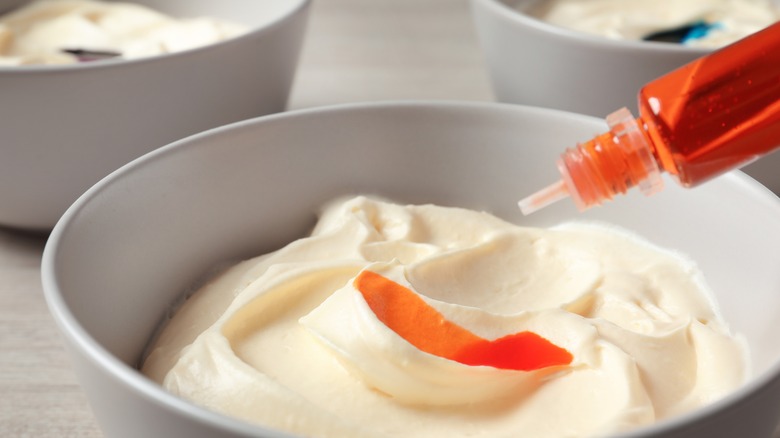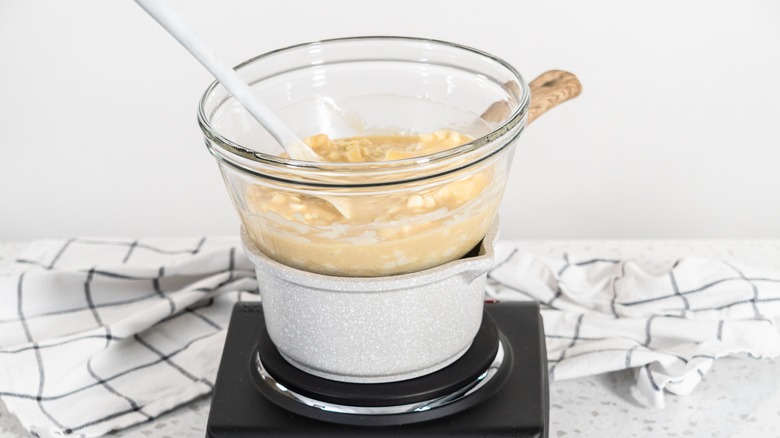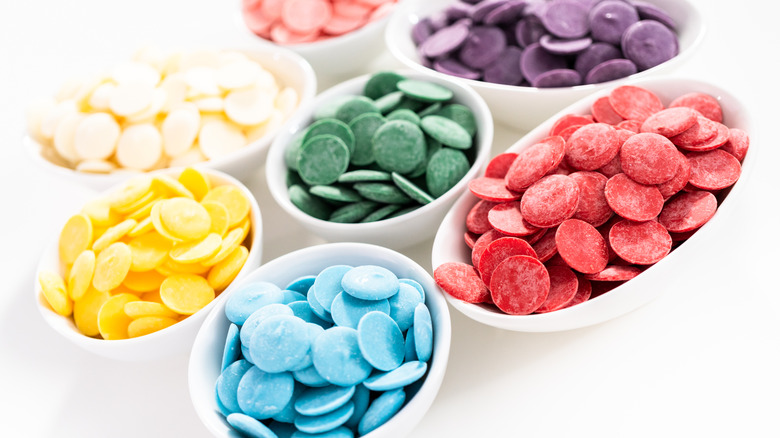The Most Important Tip To Follow When Adding Coloring To Chocolate
Melting chocolate and candy melts are sold in a variety of different colors. But if you only need a little bit of one color for your dessert, or you want a spread of different colors, it may seem a little impractical to buy several bags and wind up with a lot of leftovers. One solution to that is to buy white chocolate and simply color it with food coloring after the chocolate has been melted down.
However, when you color your melted white chocolate, you'll want to make sure you aren't used any water-based food colorings. Traditional liquid and gel-based dyes might be easy to find in grocery stores, but they are made from a water base that could cause issues in your chocolate.
Introducing water to melted chocolate could cause the confection to seize. This process changes the consistency of the chocolate, and could make it difficult to work with. For the smoothest melted chocolate, you'll need to keep all water out of the mix — including water found in food coloring.
Food coloring's liquid could cause the chocolate to seize
Some have even gone so far as to say that water is chocolate's worst enemy. When your melted chocolate meets moisture, it seizes. This means that the water and sugar attach to the cacao, and the trio turn into a thick, unworkable consistency. Even if the mixture is able to be mixed, it will likely be pretty lumpy, and may not look appealing when poured over other confections.
Once melted chocolate has seized, it will never go back to its original consistency. Still, if you don't want to waste the whole batch, the bowl could still be saved. Adding more moisture into the bowl may seem counterintuitive, but it could be exactly what's needed. Boil some water, and mix in a teaspoon at a time, mixing until the chocolate smooths out.
This method will prevent the melted chocolate from working in baked goods, but it can still be viable for drizzling on top of sweets or coating some chocolate-covered strawberries. And if you're planning on coloring your chocolate, chances are you aren't baking with it anyway.
There are water-free ways to dye chocolate
If you do want to dye your white chocolate, you'll need to use an entirely dry coloration method. Fortunately, there are a few options. You can achieve your desired brightly-colored hues using powdered food coloring. These jars of edible powder can be ordered online, though some specialty bakery supply stores may carry them in stores.
Oil-based dyes are also an option. These are generally used for coloring candy, but they could also work to color white chocolate since they contain no water. And, as an added bonus, a little bit of oil mixed into your melted chocolate could help make the confection just a little bit smoother, and give it a bit of a glossy finish.
Take caution while mixing the powder or oil-based dyes in, however — a little bit goes a long way. Start by adding a small amount of the coloring at a time, and mixing in more until you achieve your desired hue. So long as your chosen coloring doesn't allow any water to come in contact with the chocolate, your melted chocolate will remain smooth to make some sweet treats.


